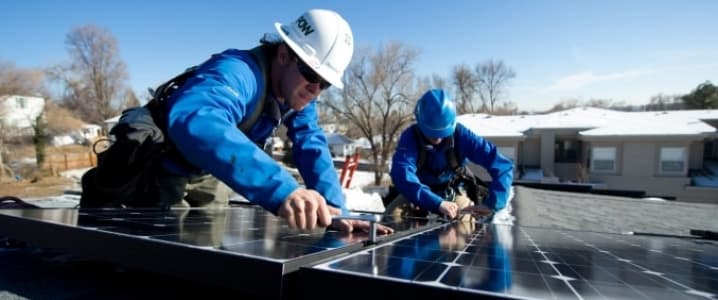Energy storage is an extremely hot area of the energy and utility markets right now, with new innovations and investment opportunities appearing all the time. Add to that the breakneck growth of the energy storage market and you have a recipe for a burgeoning industry with massive potential. One of the most innovative technologies recently though is under development at Purdue University. Researchers in the Chemical Engineering Department there are working on a battery that uses plant pollen as a component.
The pollen would act as an anode in the Purdue battery in place of the current standard which uses tiny graphite particles. The innovation is using high temperature argon environments to char the pollen, leaving residual pure carbon in its place. The residual carbon components retain the same small geometric structure as pollen, which means that they are very complex surfaces covered with spikes, crevices, and pits. In nature, that surface allows pollen to effectively stick to bees and other insects helping plants to propagate effectively.
In batteries, the complex structure of the residual carbon particles creates a greater surface area, which in turn allows for better ion storage in the batteries. That makes the batteries more efficient and gives them a greater energy capacity. The technology has significant promise since energy storage capacity in batteries is one of the key issue that constrains the industry. Related: Chinese Company Makes a Splash in Texas Shale
At this stage the Purdue research is still at the embryonic level. The technology has not even been tested on a full battery system yet, but rather only on isolated anodes. With that said, the concept looks very promising in general. The experimental pollen anode took 10 hours to reach a full charge, but only 1 hour to reach a half charge. That half charge speed is very important since it has significant potential in applications where charge rate is important such as electric vehicle battery recharging.
The broader point here for investors is two-fold. First, energy technology is advancing very rapidly and there is a good chance that the structure of the nation’s electrical grid will undergo more changes in the next 20 years than it has in the past 50.
Second, increasingly innovations are not being made by a lone inventor in a garage. Some innovations come from large companies pushing forward with technology improvements like Google’s work on self-driving cars. But in many cases, university and government research labs are the groups coming up with the really off the wall game-changing tech. Related: The Crude Crash Has Created Oil’s Technological Superpowers
Those new technologies do not stay locked in a lab though. Instead universities and the federal government’s national labs license the tech out to companies which are interested in commercializing it. That technology transfer process is an important component in the way new innovations come to market today. The reality is that most high tech inventions today are too complicated for the average inventor to build on their own, and companies are often reluctant to spend large amounts of money funding major basic science R&D labs due to pressure from shareholders for instant profit results.
Overall then, Purdue’s new research is simply the next stage in a well-defined technology development process. Consumers and investors alike though should keep an eye out for pollen batteries as the technology moves further towards potential commercialization.
By Michael McDonald of Oilprice.com
ADVERTISEMENT
More Top Reads From Oilprice.com:



















Pollen batteries definitely make sense, as well as neutrino energy's latest developments, exspecially when oil is almost gone. Investors should take notice of it.